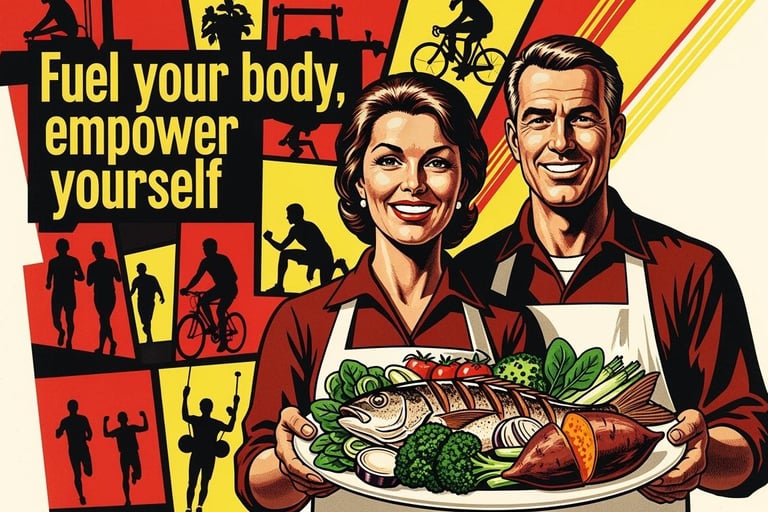FREE AI Analytics Tool for Health Reports and Scans available.
Your Guide to a Typical Intermittent Fasting Daily Schedule
Wondering what a day of intermittent fasting actually looks like? This warm, personal guide breaks down a simple 16:8 schedule
HEALTHY RECIPES
8/19/20253 min read
Let's talk about something that might sound a little intimidating but can be surprisingly simple: what a day of intermittent fasting (IF) actually looks like. I've been there, staring at the clock, wondering, "How am I supposed to go all morning without eating?"
I remember when I first considered intermittent fasting in my late 40s. The idea of "fasting" brought to mind visions of extreme hunger and misery. But what I discovered is that it's not about suffering. It’s a gentle rhythm for eating that, once you get the hang of it, can make you feel more in tune with your body's natural energy cycles. This is how a typical day unfolds for me, and I hope it gives you a sense of what's possible for you.
What Does a Typical Day Look Like?
We’re going to walk through a simple, beginner-friendly schedule: the 16:8 method. This means you fast for 16 hours and have an 8-hour window to eat. It sounds like a lot, but a big chunk of that time is when you're sleeping! For me, a typical day looks like this:
Morning: The Fasting Window (8 a.m. to 12 p.m.) This is often the part that people worry about the most. But believe me, it's not as hard as you think. When you wake up, you don't eat. Instead, you can have calorie-free beverages like water, black coffee, or unsweetened tea.
The friendly science: During this time, your body has used up the energy from your last meal and is starting to tap into its fat stores. This is a good thing! It's also when a process called autophagy kicks in—think of it as your body’s natural clean-up crew, getting rid of old, damaged cells and promoting cellular repair. This is one of the key benefits of fasting and a big reason why people report feeling so much more energetic and clear-headed.
A personal anecdote: I used to be a cranky monster without my morning bagel. But I learned to love my morning coffee as my ritual. I'd sit with a big mug of black coffee and a good book or get my morning walk in. The hunger pangs that I expected never really came, and if they did, a glass of water with a little lemon was all I needed.
Afternoon: The Eating Window (12 p.m. to 8 p.m.) This is where the magic happens—you get to eat! But this isn't a free-for-all to binge on everything in sight. The goal is to have two healthy, satisfying meals and maybe a small snack in between.
Your first meal should be balanced and nourishing. A great example is a big salad with a mix of leafy greens, grilled chicken or chickpeas for protein, and avocado for healthy fats. My first meal often feels like a beautiful feast because I've been looking forward to it.
Your last meal of the day should be a couple of hours before your fasting window begins again.
The friendly science: During your eating window, you’re providing your body with the fuel it needs. By consuming nutrient-dense foods—protein, healthy fats, and fiber—you're keeping your blood sugar stable and staying full for longer. This prevents those annoying insulin spikes that can lead to fat storage, which is a major win for women in our age group.
Evening: Winding Down (8 p.m. onwards) This is when your fasting window begins again. I've found this to be the easiest part of the day because it's when I'm naturally winding down. It means no more late-night snacking while watching TV. Instead, I'll have a cup of herbal tea and just relax.
A personal anecdote: My old habit was to have a bowl of cereal or a few cookies after dinner. It felt harmless, but it was just constantly stimulating my system. Now, I simply don’t eat past 8 p.m., and the result is better sleep and no more indigestion. It's a small change that has a huge positive impact.
You Don't Have to Be Perfect
The most important takeaway is that intermittent fasting is a tool, not a religion. Some days, you might have a special brunch with friends, and that's completely fine. The key is to get back on track the next day. Listen to your body, be patient with yourself, and remember that this is about creating a rhythm that makes you feel strong, vibrant, and in control.
Disclaimer: This article is for informational purposes only and is not a substitute for professional medical advice, diagnosis, or treatment. Always seek the advice of a qualified healthcare professional with any questions you may have regarding a medical condition.


Address
Blk 8 Cantonment Close
SIngapore